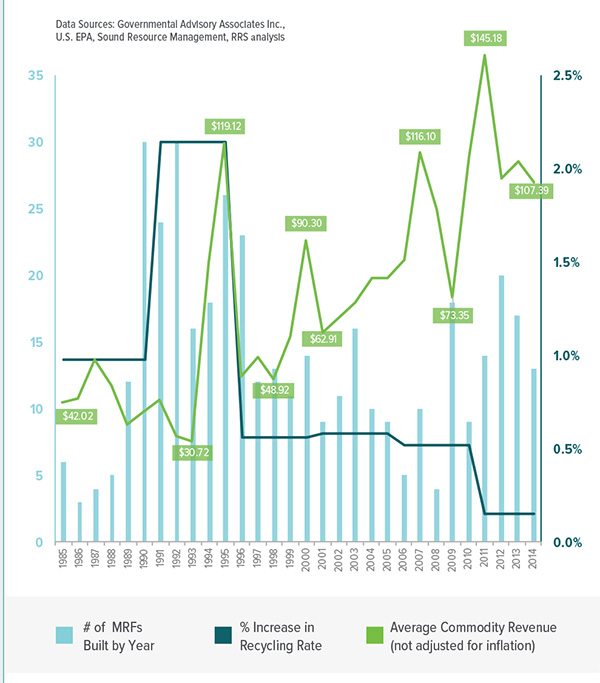This story originally appeared in the June 2016 issue of Resource Recycling.
Subscribe today for access to all print content.
This story originally appeared in the June 2016 issue of Resource Recycling.
Subscribe today for access to all print content.
This story originally appeared in the January 2016 issue of Resource Recycling.
Subscribe today for access to all print content.

This story originally appeared in the September 2016 issue of Resource Recycling.
Subscribe today for access to all print content.
This story originally appeared in the October 2016 issue of Resource Recycling.
Subscribe today for access to all print content.

The U.S. experienced a rapid surge in its recycling rate as capacity increased with the growth of curbside recycling programs and construction of materials recovery facilities in the late 1980s to mid-1990s.
However, the last several years have seen the increases in recycling rate level off and stagnate in a development that parallels recent commodity pricing.
While rising commodity prices will to some degree help drive increased recycling, the trends underscore the need to overcome barriers in areas such as access and resident participation.

Note: Commodity revenue numbers represent average prices for typical curbside recyclables receiving by processing facilities in the Pacific Northwest.
Data Corner is compiled monthly by recycling consultancy RRS. Visit recycle.com to learn more.
This article originally appeared in the May 2017 issue of Resource Recycling. Subscribe today for access to all print content.
Are PET thermoforms that are placed in curbside bins actually making it to market? A trade group looks into that question and provides an update on the opportunities and challenges tied to this increasingly prevalent form of plastic packaging.

 According to the European Commission, an estimated 100 billion plastic carrier bags are used in the European Union every year – an average of almost 200 bags per capita. Around 90 percent of these are lightweight bags (thinner than 0.05 millimeters), and most are used only once before being thrown away.
According to the European Commission, an estimated 100 billion plastic carrier bags are used in the European Union every year – an average of almost 200 bags per capita. Around 90 percent of these are lightweight bags (thinner than 0.05 millimeters), and most are used only once before being thrown away.

